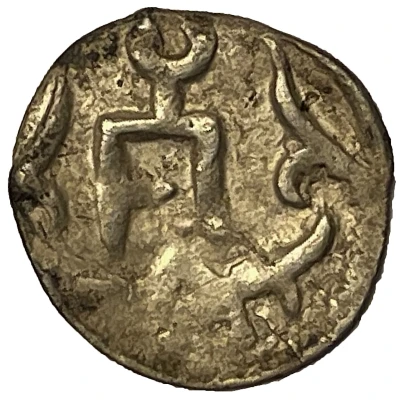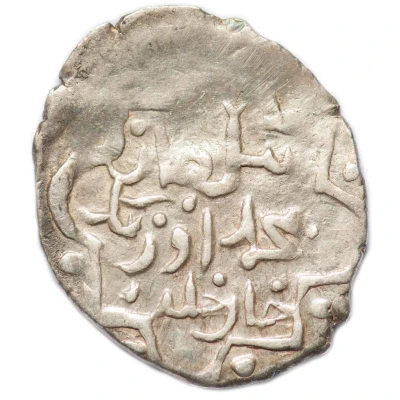


Dirham - anonymous, temp. Muhammad Uzbeg Bulghar
728 (1328) year| Silver | 1.3 g | - |
| Issuer | Golden Horde |
|---|---|
| Khan | Muhammad Uzbeg (1313-1341) |
| Type | Standard circulation coin |
| Year | 728 (1328) |
| Calendar | Islamic (Hijri) |
| Value | 1 Dirham / Dang / Yarmag (0.7) |
| Currency | Dinar (1227-1502) |
| Composition | Silver |
| Weight | 1.3 g |
| Shape | Round (irregular) |
| Technique | Hammered |
| Orientation | Variable alignment ↺ |
| Demonetized | Yes |
| Updated | 2024-10-06 |
| Numista | N#322331 |
|---|---|
| Rarity index | 95% |
Reverse
The square in a circle, 4 “knots of happiness” in the outer segments, Arabic inscription in 3 lines inside, date below
Script: Arabic
Translation:
Mint of
Bulghar
628
Comment
Similar coins on zeno.ru
First time this type published by H.M. Fren considered the year 728 marked on it to be correct and attributed it to the time of Uzbek Khan. G.A. Fedorov-Davydov, reading the date also 728, nevertheless, suggested that it was distorted and the correct date should probably be 678, while noting that it was impossible to say for sure. A.Z. Singatullina immediately read the date in a different way - 628, which, in her opinion, should mean 682 AH.
The reasons for the attempts of respected numismatists to consider the date of the dang erroneous and attribute its issue half a century earlier are its anonymity and the proximity of its appearance and design to the 13th-century coinage. Treasures with such coins could help to date this type of coins with confidence, but by that time they were not known. Now one such treasure has been published (Gumayunov, 2002, pp. 81-82). A small hoard of 16 silver coins was found in autumn 2001 in Tatarstan. It included 10 anepigraphic dirhams, 2 anonymous ones - 1 with an Arabic maxim, another with the legend “The Just Sultan”, nominal dang of the Uzbek Mohshi coin and without indicating the place of issue, and 2 anonymous dirhams of 728 AH. The treasure was obviously hidden during the reign of Uzbek after the reform of 1310, all previously issued coins were withdrawn from circulation. Therefore, the date on this type dang is not distorted and corresponds to 728 AH. (The author of the cited source concluded that the rest of the coins of the treasure were also minted during the first half of the reign of Uzbek, and not in the 1280-1290s).
Source: https://muzeydeneg.ru/research/monetnyie-dvoryi-zolotoy-ordyi-i-ih-produktsiya-dlya-perioda-1300-1356-gg/
Interesting fact
The Dirham coin is interesting because it was issued during the reign of Muhammad Uzbeg, who was the Khan of the Golden Horde, a Mongol khanate that ruled over much of Eastern Europe and Central Asia during the 13th and 14th centuries. The coin is made of silver and weighs 1.3 grams, which was a significant amount for a coin at that time. Additionally, the fact that it is anonymous, meaning it does not bear the name of the ruler or any other identifying marks, suggests that it was issued during a time of political instability or transition.



